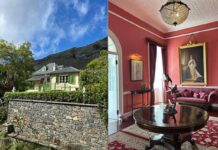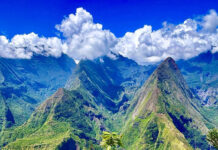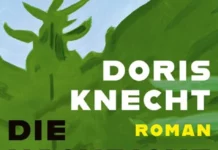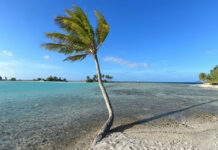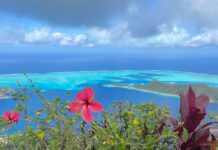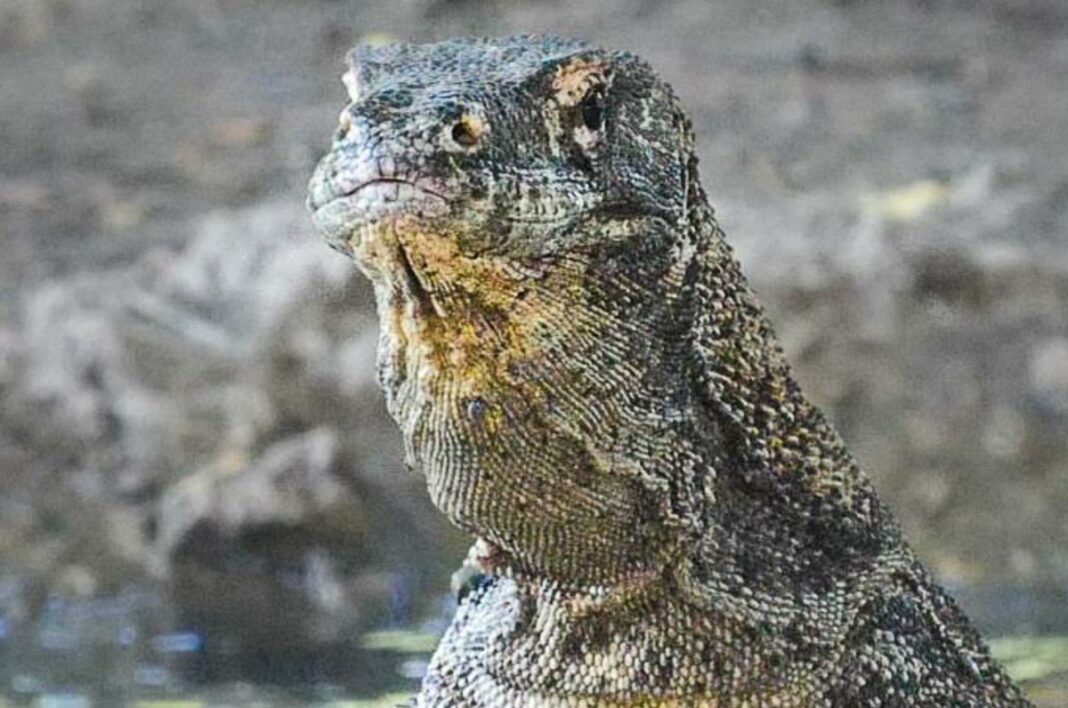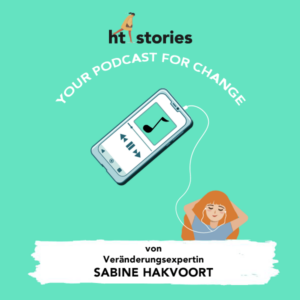On our zig-zag course through Indonesia, we arrived further south in the Flores Sea. The Indonesian live-a-board wooden boats, which offer weekly tours through the most beautiful diving areas in Indonesia, move from Raja Ampat in the north to the Flores Sea in the south in May. That is the beginning of the season that reaches its peak in August and September.
We follow them and our first stop is the still quite unspoilt island of Alor. We anchor in front of the green hills and are immediately surrounded by children who approach us curiously in their small wooden boats. They are shy. ‘Hello Mister’ is all the vocabulary they know, but that doesn’t matter, because ultimately, it’s all about taking a curious look at us. We all wave cheerfully and enjoy looking at each other. Only few tourists come here.
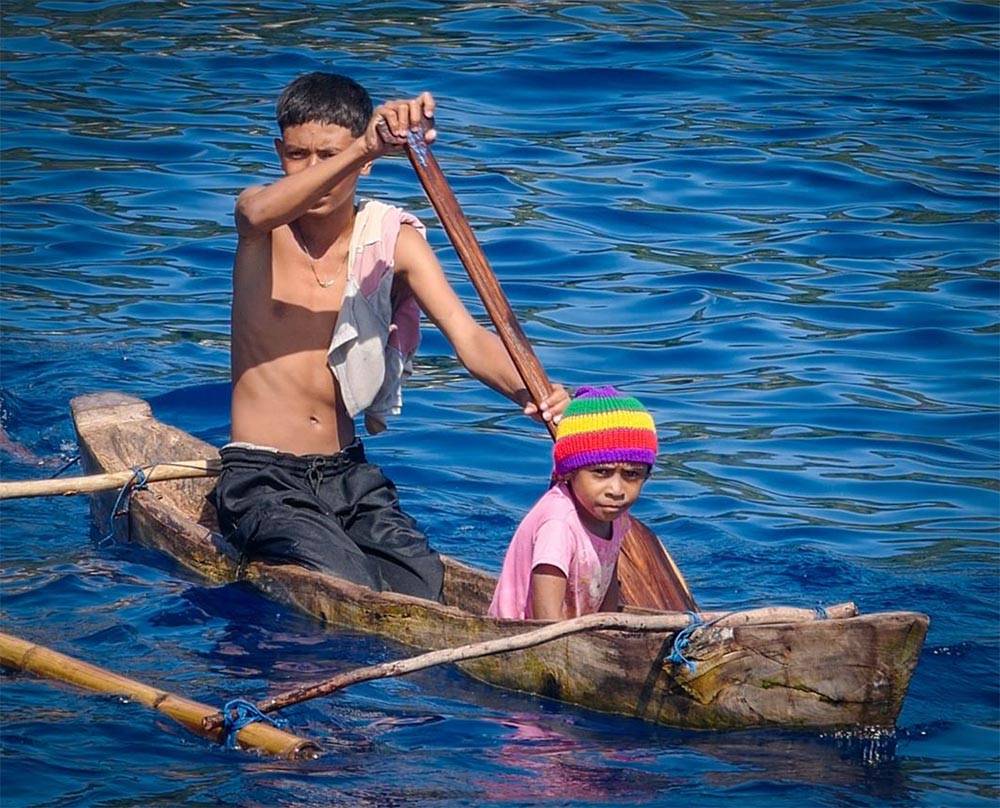
On a short walk through the main town, we pass an endless number of small stalls and shops. From hairdressers to food stalls, tailors and fishmongers, everything is available, and the place is bustling with activity. Everywhere we go, people offer us goods, want to give us a lift on their scooters or just look at us. More photos are taken of us than the other way round. Encounters are friendly, polite, and very respectful. We look at a manatee in one of the bays and later watch the weavers painstakingly producing sarong fabrics.
Traditional sarong making
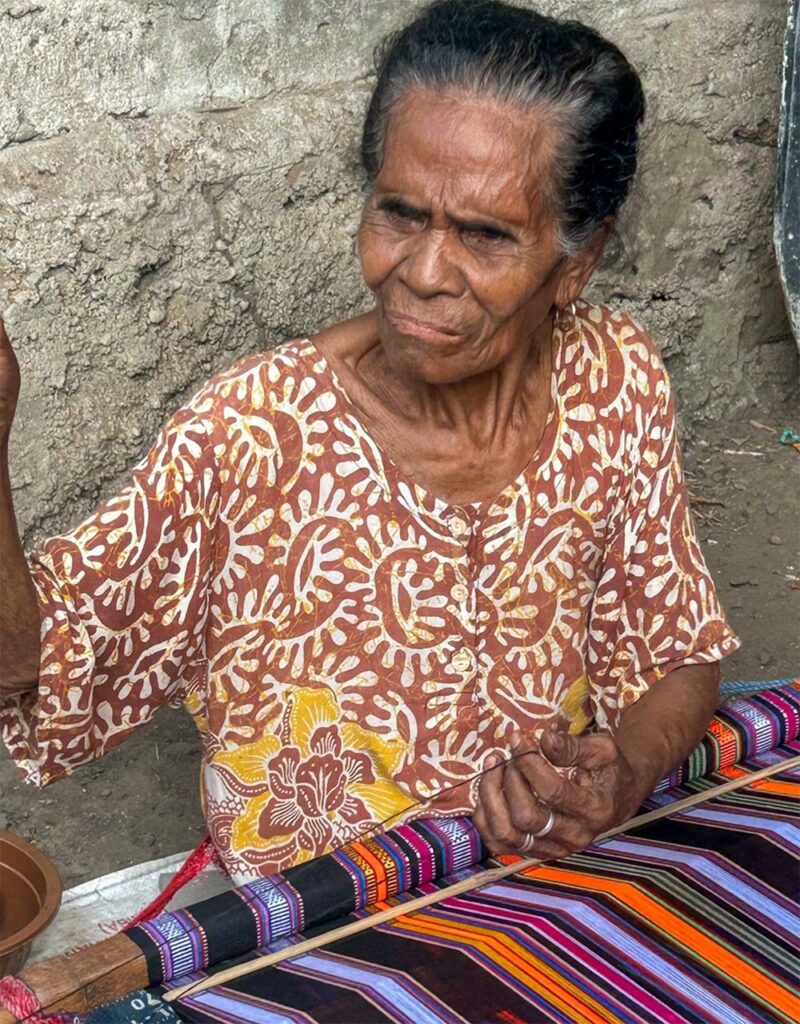
The wedding dance
The highlight takes place in the afternoon. We visit a traditional village in the mountains above the capital Kalabahi. Achmat’s bus groans up the steep hill to take us to a collection of historic huts, in the centre of which the traditional wedding dance is performed. A small group of dancers in traditional costumes are already waiting for us. We are greeted joyfully. The lips of the men and women are coloured red from chewing betel nuts. The fruits of the areca palm, the betel nuts, are dipped in slaked lime and then chewed. This colours the teeth and mouth blood red and is a popular intoxicant in Southeast Asia. Presumably our dancers are used to this, as they appear clear and determined despite their red lips.
I am bundled onto a kind of portable high seat and carried around the traditional drum, called a moko, the traditional dowry. These drums are very ornate and used to be made of bronze. Much to the delight of my small travelling group, I am fully integrated into the dance group and try to do my best. Afterwards, there are nice conversations and an archery competition.
After the show, the Takpala dancers put on their normal clothes. They are not an untouched tribe which are said to still exist in Indonesia. They live in small villages in the mountains of the island and know how to deal with tourists, for whom they are organising this event. But it is presented with great seriousness and authenticity. The dancers show themselves with pride and dignity.
We have already seen many examples on this journey of how difficult it is for indigenous peoples in many countries to participate in global progress and preserve their traditions at the same time. Increasingly, this is compounded by the extraction of resources, which often bypasses them. In addition, the influx of people from other regions often takes away their space. They are unable to keep pace with these developments, which often leads to resignation, alcoholism, or aggression.
The sad highlight of this development is the recent riots in New Caledonia. We were there last November and came across a wealthy country, rich in resources and a very good infrastructure thanks to the French administration, who try to honour the culture of the Kanaks with museums and cultural centres. But that doesn´t seem to be enough effort for a successful integration.
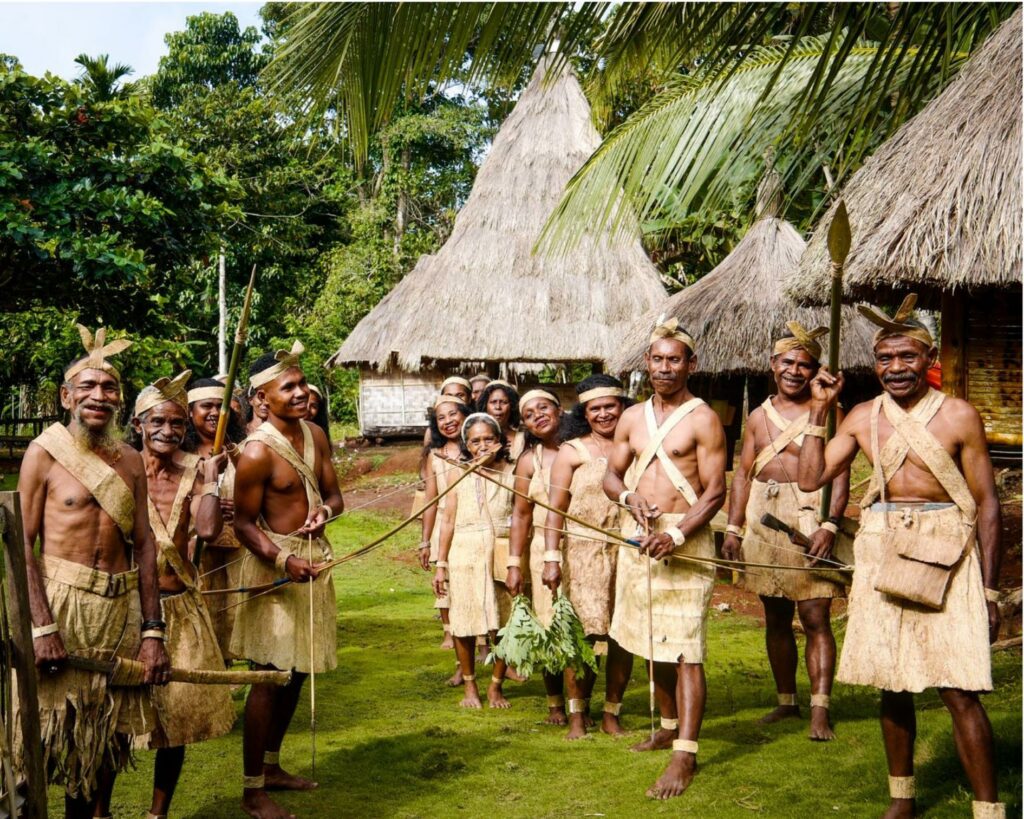
After Pantar, the beautiful neighbouring island, we continue in the direction of Flores. Labuan Bajo, in the west of the island, is a central point for travelling to the Komodo National Park. Hundreds of boats offer visitors day trips or diving excursions lasting several days. Rumour has it that this place is developing into a new Bali explosively. In what used to be a tranquil place, now is a busy place where one tour operator is next to the other. In between there are hostels, cafés, restaurants and small souvenir shops. The trade in wooden Komodo dragons is flourishing. For us it seems to be unusually crowded and busy. But after a long time of remoteness, a little more tourism and infrastructure is very welcome and certainly a good preparation for the hustle and bustle of Bali.
Endangered dragons in Komodo National Park
On Rinca, in Komodo National Park, you can marvel at the real varans, the Komodo dragons. We are lucky, they make an appearance, and our guide kindly explains their behaviour to us. The lizards, which only live on Rinca, Komodo and Flores, grow to an average length of three meters. They anaesthetize their prey with venom from glands in their lower jaw and are quite capable of tearing down larger mammals such as deer or wild boar. Being a favourite attraction for tourists, they are not very popular with the locals, which is why they are now an endangered species, with only around 3000 that are left.
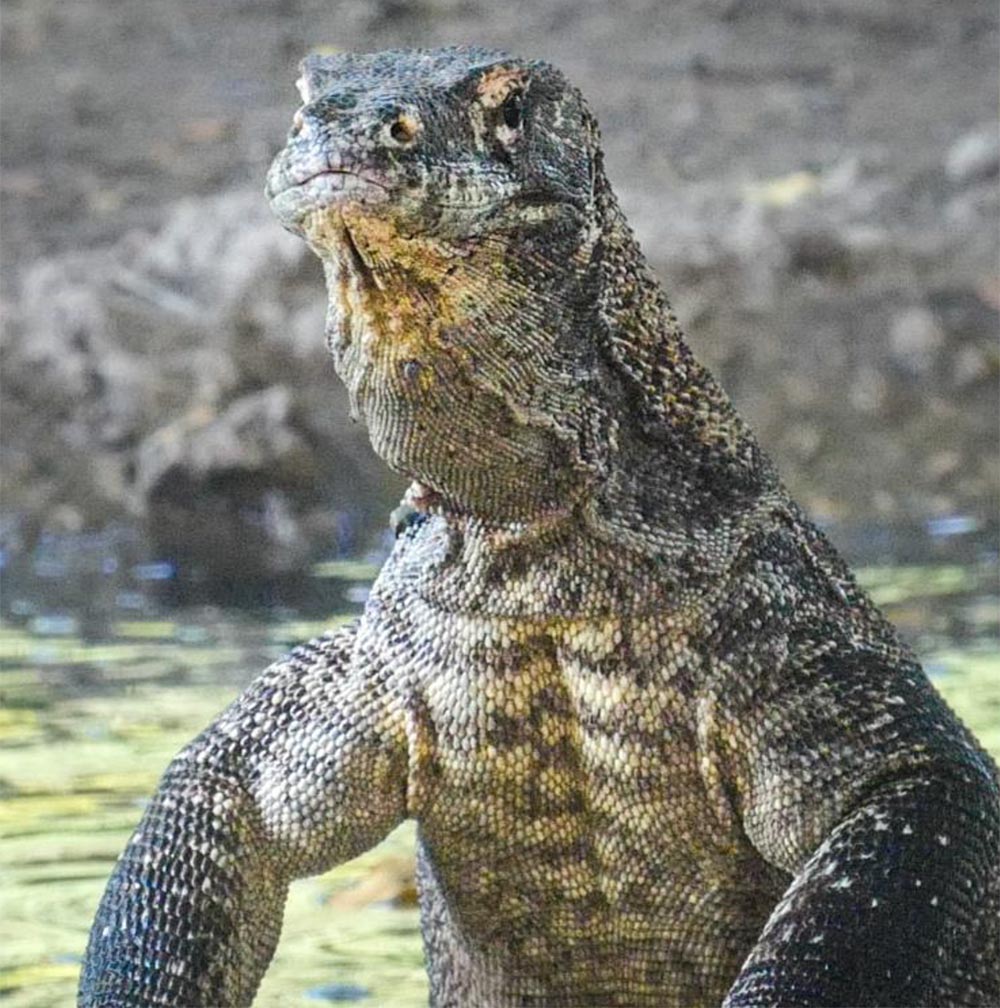
Life at the time of the dinosaurs
I never thought I would be so excited by the sight of a fossilized turtle. But the fact that it once lived millions of years ago in the reef that can now be seen fossilized in the Mirror Caves, above Labuan Bajo, is sensational. 50 million years ago, the water level was much higher than it is today. Scientists at the University of Sydney have made some interesting calculations. According to them, large parts of today’s coasts were under water at a higher water level of 170 meters during the Cretaceous period. The development of the earth and the fact that less earth crust is formed in the seabeds, has led to a correspondingly lower sea level. https://news.mongabay.com/2008/03/cretaceous-sea-levels-were-550-feet-higher-than-today/
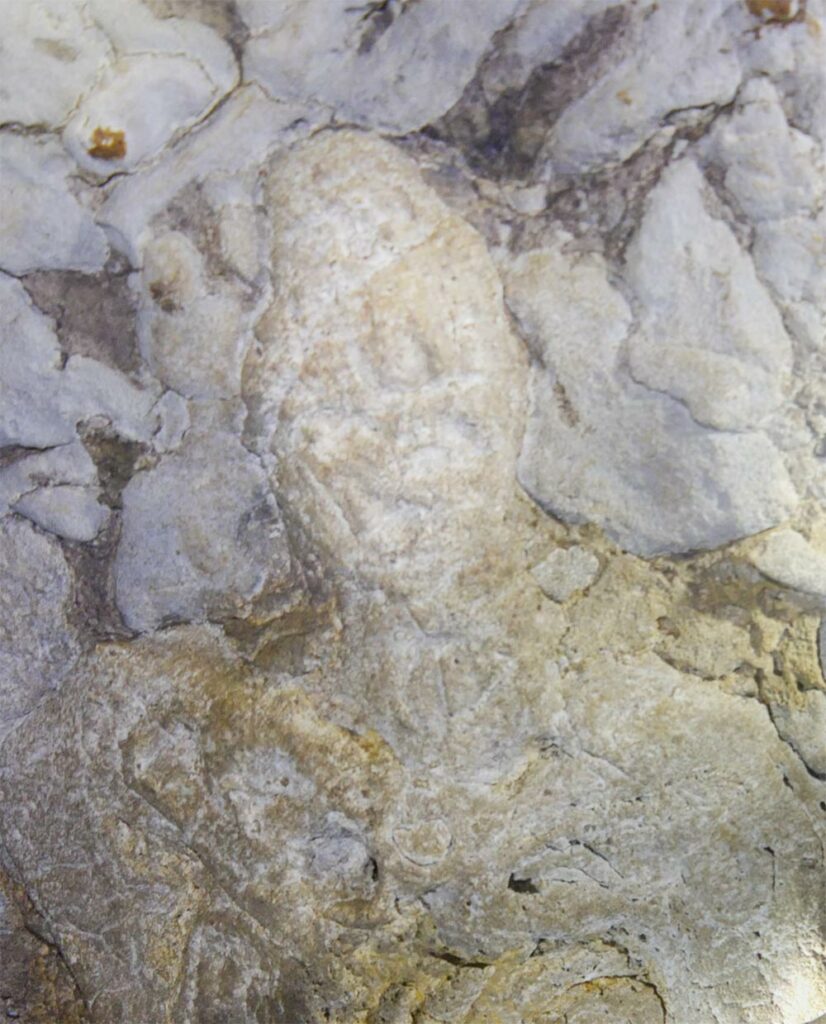
After Rinca and Flores, we climb up to the Pulau Padar viewpoint, which is an integral part of the day trips from Labuan Bajo. Accordingly, it is very popular. And rightly so because the view over the national park is fantastic. Anything that is so beautiful deserves attention. After the tropical green north, the islands of the Komodo National Park are barren, but no less attractive and we are glad to have followed the diving boats to the south.

Private photos

